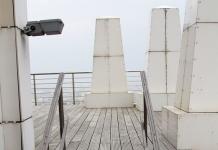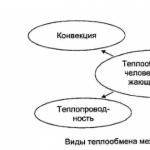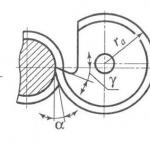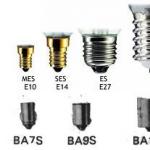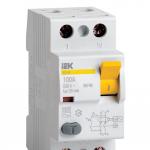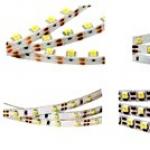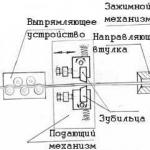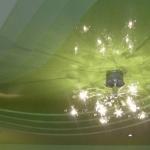The lie detector (polygraph) is a rather old invention. With his appearance, the world turned upside down. Initially, only criminals and the military were tested on this device. But today things are different - any person can be subjected to such a test. How accurate is the result? Is it possible to fool a lie detector? Let's look at this topic in more detail.
The principle of operation of the lie detector
A lie detector is a device that determines the truthfulness of a person's words based on the recording of breathing parameters, cardiovascular activity, skin electrical resistance and other physiological factors, and then their further research.
 The lie detector is able to sense the physiological state of the body, so even the slightest desire to lie can give you away. Despite the fact that you will try to focus your thoughts on something else, subconsciously your experiences will still give you away. At least a little, but the body will respond to the current conflict between your consciousness and subconscious. This is what the lie detector pays attention to.
The lie detector is able to sense the physiological state of the body, so even the slightest desire to lie can give you away. Despite the fact that you will try to focus your thoughts on something else, subconsciously your experiences will still give you away. At least a little, but the body will respond to the current conflict between your consciousness and subconscious. This is what the lie detector pays attention to.
Initially, the lie detector recorded only a few parameters. But modern devices pay attention to almost 50 indicators. But even so, many lie researchers argue that interrogation on such a detector is too inaccurate.
So, can you fool a polygraph? Yes. Let's discuss how this can be done. But before you try to lie on a polygraph test, you need to be very well prepared and understand how it works. If you get nervous or behave somehow unnaturally and feignedly, it can ruin everything for you.
All methods of lie detector deception are developed not to hide the evidence of crimes or something like that, but to protect the privacy of a person. After all, every person has secrets about which he would not want to spread.
Ways to cheat a lie detector
All methods of lie detector deception can be divided into 3 main groups:
- mechanical - inflicting pain or discomfort on oneself;
- psychological - concentration on other situations, objects, NLP techniques;
- pharmacological - taking medications or other chemical drugs.
There is also a certain group of people who find it very easy to fool a polygraph:
- people from the special services (they are specially trained in this for a long time);
- pathological liars (they constantly lie and do not see the difference between a lie and the truth);
- children (often sincerely believe in lies);
- elderly people with insanity;
- sociopaths (these people react to everything differently than the rest, and thus confuse the lie detector).
How to behave during a lie detector test
Experienced printers, of course, may notice that you want to lie. To prevent this from happening, follow some points:
- do not look at one point;
- do not make a stone frozen face;
- do not give an answer until the tester has asked the question to the end;
- do not speak unnaturally and monotonously, try not to tremble your voice.
We deceive the lie detector: practice
 The difficulty lies in the fact that at the beginning of the test you are asked simple test questions, and when the key question sounds, the body will still react with an increase in blood pressure or an increase in heart rate and respiration, pupils may dilate or voice tremble. The detector will quickly fix all this and give the result.
The difficulty lies in the fact that at the beginning of the test you are asked simple test questions, and when the key question sounds, the body will still react with an increase in blood pressure or an increase in heart rate and respiration, pupils may dilate or voice tremble. The detector will quickly fix all this and give the result.
Your task is to provoke false reactions to simple, harmless questions that may indirectly concern you, or to give an answer to questions with a provocation, hiding your feelings. A mentally stable person with great willpower can easily go through such a procedure.
- Fake Reaction Combination
Try mentally multiplying large numbers or focusing your attention on any pattern, focusing on a specific memory of your life or on any part of your body.
Before the test, you can tire yourself with insomnia for 3-4 days. Your body will be in a trance state. You can also drink plenty of fluids to make you want to go to the toilet (a very good method).
So that the hands and fingertips do not sweat, they can be lubricated with alcohol or a special ointment for sweating. It is only important to check that the liquid is moisture resistant and does not have any odor or color.
- mood
It is important to feel as calm as possible. Try to locate the specialist who conducts the check. Set yourself up to be your friend. Do not wind yourself up, try to get rid of guilt. The lie detector is just a machine. Do not inspire yourself with something terrible and do not worry.
- Take your time
The questions you will be asked will be both neutral and provocative. It is important to focus and not rush to give an answer. Try not to succumb to provocations. Pick a pace that works for you and respond at that pace. Any oversight will be used against you.
- Actor play
This is the ideal method. Actors, playing different roles, get used to false stories and believe in them. By believing his lies, a good actor will pass the test without any difficulty. Such acting immersion masks the reactions of the body, and it will no longer react so brightly, because it will be convinced that you are telling the truth.
- Play "fool"
Try to answer questions superficially and not seriously. the lie detector will simply get confused and will not be able to give the desired calibration. The main thing is not to overwork, otherwise this idea will only turn to your detriment.
- NLP techniques
If you still decide to lie, prepare in advance. Think over everything to the smallest detail. Live this story in your head as if it happened in reality, so that later you don’t worry and don’t invent anything on the go.
Pay attention to details such as smells, colors, and emotions that you supposedly experienced in this situation. Try to immerse yourself in the atmosphere of history and believe in it. Don't be afraid to overplay. On the contrary, try to transform your emotions. For example, remake fear into a feeling of anger, etc. “Dig into” every word and you may be able to rephrase the questions into more convenient ones for yourself.
- Alcohol
Drinking immediately before the test is not worth it. But going for a hangover treatment is a good way to fool the detector. In this state, unstable reactions occur in a person’s body and the polygraph weakly picks up the impulses of your body.
- Suppression of emotions
The principle of the method is to give answers automatically, without focusing on them. The effectiveness of this method is quite high, but it requires a lot of training, as it requires good self-concentration.
- Medical preparations
You must know your body well, and how it reacts to certain chemicals, so as not to make yourself worse. You can take medication to lower blood pressure or some psychotropic substances. It is important to be able to calculate the time of action of any medications so that everything looks natural. But this method is the most ambiguous. We do not recommend using it.
It is possible to influence the heart rate and pressure without chemicals and medicines - with the help of breathing. Taking calm breaths in and out to relieve tension. To learn this, you need to do special yoga or breathing exercises.
- Muscle tension
Subtly try to press your tongue up to the palate or bring your eyes down to your nose. You can also put a button in the shoes under the big toe or under the heel. With each answer (positive or negative), by pressing the button with your foot, the body will focus on pain. This will elicit the same response to any question.
During apartment renovations, especially in older houses, a wiring diagram is required. Otherwise, when drilling holes or chasing, you can damage hidden wires that are energized.
Important! Whether or not you know where the wiring is located, indoor work should be carried out during a power outage.
To search, a metal detector and hidden wiring are used.
Such a device can be bought at a power tool store. This is a necessary equipment for repair teams. However, if you are just doing repairs in an apartment with an interval of several years, the cost of acquiring it is irrational. The device device is simple. A master who knows how to hold a soldering iron in his hands can make a wiring detector with his own hands. In this case, its value will tend to zero.
How to make a wiring detector yourself?
There are two main concepts:
- The principle of voltage multiplication;
- A radio receiver on a microcircuit that captures an electromagnetic field.
Both designs are easy to manufacture, and are assembled on an affordable element base. If you are fond of electronics, you can pick up radio components in your workshop. Even if you buy them on the radio market, the cost is incomparable with the factory model.
Hidden wiring detector on transistors
Components for crafting:
- A multi-stage voltage multiplier will require ultra-sensitive transistors. BC547 have proven themselves well. These are silicon miniature bipolar triodes, with an n-p-n structure. They have a fairly high gain with a minimum level of interference;
- low power resistors. 1MΩ, 1kΩ and 220Ω. For the first, second and third stages, respectively;
- Indicator LED;
- Batteries or accumulators;
- Frame.
Schematic diagram of the device:

The first stage receives a weak signal from the antenna, shown by the arrow in the diagram. It is an electromagnetic field created by electrical wiring.
Tip: To improve search performance, it is recommended to plug in a low-power, interfering electrical appliance, such as a room fan.
A small current appears on the emitter, which is repeatedly amplified by the second stage. A practically ready signal is fed to the base of the third transistor (cascade). After amplification, an electric current is formed on its emitter, sufficient to light up the LED. The device is powered by 6 volts.
Back in the 19th century, scientists proved that deceit and denial of guilt cause a number of physiological changes in the human condition. The first thing scientists noticed was increased blood pressure, sweating on the skin, dry mouth, heavy breathing in and out. Based on these phenomena, scientists, psychologists and physiologists developed the polygraph. The current lie detectors allow you to determine whether a person answered the truth in more than 90% of cases.
The composition of the polygraph includes several measuring instruments, with recording devices connected to them:
- a sensor on an elastic bracelet, which is fixed above the elbow, and gives indications of changes in pulse and pressure
- a sensor that is placed at the same level with the chest to transfer the rhythm of breathing to paper
- 2 sensors will be placed on the hands to record changes in the skin resistance of the subject.
Testing takes place as follows: a person is asked a series of questions, to give answers, he must answer them yes or no. To begin with, light questions are asked that are not related to what happened in order to see what a normal reaction the person has, then questions are asked that are directly related to the incident. And immediately there is a deviation from the norm. This is shown in Figure 1.
For a more accurate test of the subject, there is a method with any cards. The test subject is shown 10 cards, of which he must remember only one. Then they are shuffled, and he must answer ten times "no". It turns out that once he still lies. This answer will be recorded and used in a further survey.
In the US, more than twenty national institutions (this includes the police, FBI,) have had more than 500 lie detectors since 1965. Most private institutions, such as a bank, regularly test their employees on a polygraph. Companies that manufacture lie detectors conduct training courses for subordinates who later work with the lie detector.
How to make a lie detector at home
If you decide to try yourself as a polygraph examiner, but for now you have no desire to buy a lie detector for several thousand dollars. You can buy it from us, our company sells not only new but also used polishers at a price several times cheaper than new ones. Also, you can try to create it at home. However, basic knowledge of radio electronics is required.
Figure 2 shows a simplified electrical circuit diagram. However, it has a high sensitivity, which means that with a weak agitation of the test subject, the arrow of the device deviates.

Figure 3 shows two electrodes, they look like two loops, and are attached to the wrist or arm. When attached to the hand, significant sensitivity will be provided, but interference will also be present.

The sensitivity of the lie detector shown in Figure 2 is changed by the resistor R1. A recorder can be connected to the output terminals. All resistors that are in the circuit serve only to protect transistors from overloads. At the end you will get a good device with which you can do some very funny experiments.

Do-it-yourself polygraph, second scheme
The principle of operation of this circuit is as follows, the device amplifies infra-low frequencies, the gain is 399-1199. What exactly the device will do depends on the type of output controller that will fix the signal at the output. We will use it as a "lie detector".

As described above, thought processes are consistent with physiological changes in state. When a person is worried, the heartbeat quickens, the frequency of inhalations and exhalations noticeably changes. It is very clearly possible to register how the resistance of the subject's skin changes, after several questions about what he wanted to hide, the resistance changes by 3-5%. To do this, we need two sensors that will be worn on the fingers of one hand of the person being tested. This is shown in figure 2.

After we fixed the sensors on our fingers and turned on the device, we need to wait about 10 seconds for the transients to end. The test-taker should put his hands comfortably to him, and not move it. Next, we ask questions to the examiner, and it is necessary not to ask quickly, take a break for up to 4 seconds, and after the indicator lights have gone out. In some cases, the LEDs flash after each question, which symbolizes the person's excitement. You need to give him time to calm down. As an example of test questions, you can use the above method with cards. Figure three shows a single-sided printed circuit board, a lie detector made at home. The device includes radioelements:
- crown power;
- capacitors C1, C5, C6 are ceramic, and the rest are K50-6;
- transistor KT315; and ET361;
- resistors SP3-1B;
- two AL307 LEDs.
The idea of the polygraph was born many years ago. The impetus for its development was the research of the Italian physiologist A. Mosso. Such techniques made it possible for the first time in 1902 to prove the innocence of the defendant. Today, the polygraph is used when checking applicants for a position, so you can often hear the question, how to deceive a polygraph?
What is a polygraph?
A polygraph is a sensor unit, which includes a set of sensors connected to a computer device. This is an inseparable complex of apparatus and psychologist. On sale there are analog and digital types of devices. The first of them have long occupied the niche of rare goods, and the latter are popularly used in the interrogation of criminals, candidates for any position or to clarify.
How does a polygraph work, what does it react to?
The polygraph is a psychophysiological study. The device consists of:
- sensors that control the data of the psychophysiological state of the subject's body;
- A computer that records and processes data from sensors;
- output device in the form of an oscilloscope, printer, monitor screen for displaying information received by sensors on a diagram.
The detector determines and fixes microstresses in the subject. Sensors are attached to such places on the human body where it is possible to clearly identify the psychophysical state of the body, changes:
- breathing in the chest area;
- breathing in the abdominal cavity;
- electrical conductivity of the skin;
- blood filling in peripheral vessels;
- heart rate.
After the device is installed, the subject begins to ask questions. First, simple questions are asked to test the equipment. These may be questions about the name, surname, place of birth, marital status. The answer is given 15-20 seconds, which allows you to think before answering. After the polygraph examiner begins to understand how the device responds to "honest" answers, he suddenly begins to ask basic questions. During the procedure, the state of the body is recorded before the answer, during its pronunciation and after.

Why is a polygraph dangerous?
The polygraph is a biomedical device capable of recording the psychophysiological outburst and the reaction of the human body. In order to successfully pass the lie detector, it is necessary not only to master your emotions perfectly, but also to control your heart rate and blood vessels. That is why the polygraph examiner always asks if the subject has health contraindications before conducting the test.
The device closely interacts with the subconscious: emotions, memories, experienced stresses. This is the main danger of the device. Although it does not physically affect a person in any way, it can provoke the appearance of:
- tantrums;
- heart attack;
- nervous attack;
- epilepsy;
- miscarriage;
- asthma attack.
Who should not take a polygraph for health reasons?
According to the existing law on which diseases it is impossible to undergo a polygraph, citizens who suffer from:
- bronchial asthma;
- cold with severe cough and runny nose;
- cardiovascular diseases;
- hypertension;
- strong alcohol intoxication;
- drug addiction;
- deviations of mental activity;
- damage to the central nervous system;
- mental or physical exhaustion;
- pain syndrome;
- pregnancy (the fetus also experiences in the form of fear, excitement, which is immediately recorded by the device);
- epileptic seizures.

What not to do before a polygraph?
The upcoming polygraph test causes stress and fear in many people, even if the person is going to speak the truth. This condition occurs due to ignorance of the principles of operation of the device, fear of being caught in a lie. That's why many people ask how to prepare for a lie detector test, and what not to do before a polygraph:
- Do not try to predict the test questions, this can cause self-condemnation, excessive anxiety.
- Relax, thanks to good health, physiological reactions will be as accurate as possible.
- Don't treat the test day as something special. Start your morning with a run and a cup of coffee.
- Do not take any medication unless it has been prescribed to you by your doctor, otherwise the antidepressants will skew the results of the test.
Can a polygraph be fooled?
Is it possible to fool a polygraph? Yes, it's possible. Figuring out how to pass a polygraph without problems, this can be done, for example, with a simple biting of the tongue and causing tension in the legs, mentally counting sheep. Each of these actions will cause physiological reactions that will be immediately recorded by the device. Mental counting will prevent the subject from fully comprehending the question asked, which will lead to an indeterminate result.
History remembers the case of the unjustly convicted Fey Floyd. After failing a polygraph test, he was convicted of a murder he did not commit, and only a few years later the truth surfaced. Floyd decided to take revenge on the offenders and became a real expert in the field of polygraph testing. He taught prisoners who confessed to him a crime how to deceive a polygraph, as a result of which most of the criminals managed to pass a lie detector, they were found not guilty.
Ways to fool a polygraph
There are several ways to cheat a lie detector:
- Decreased sensitivity of sensory analyzers. To do this, the day before the test, drink some alcohol. On the day of the test, your reactions will be somewhat inhibited, and the polygraph will not be able to give an accurate result.
- Medications. Before using them, it is important to know and understand your body's reaction to "chemistry" well. So, if the subject took psychotropic substances for the first time, out of habit he may begin to behave inappropriately, which the polygraph examiner will immediately notice.
- Non-chemical way. To do this, you need not sleep for several days. But it is worth remembering that an experienced polygraph examiner will always notice such a condition.
- Emotion control. It is important not only to be able to give the right reaction to the question, but also to control facial expressions.
- Physiological reactions. For example, some, in an attempt to counteract the polygraph, thought of putting a button in the boot under the big toe. When pressed, the pain causes a false reaction.
A simple detector that will show whether a person is lying or telling the truth. Of course, he is far from a real, modern lie detector - a polygraph, but he deserves attention, since anyone can do it with their own hands. Like any, even the most modern polygraph, it does not show 100% that a person is lying. It shows that the human body has changed its state, in the readings that the detector monitors. And the operator of the detector determines whether these readings should be taken into account or not.
The principle of determining lies
The device is a threshold detector that measures the resistance of a section of the human body. The device reacts to a change in this resistance, and, depending on the reading, changes the state of the indicator.In general, the resistance of the human body is by no means constant, it depends on many factors. Thanks to this property, we will track a sharp change in this value.
What you need to build a lie detector
I will not list all the elements - they can be seen on the diagram. There are no special requirements for them - you can use any.Transistors 2N3904, domestic counterparts KT315, KT3102, or any other of the same structure.

Scheme of a simple polygraph
The circuit is built on three transistors. The first transistor is a DC amplifier. On the other two, a Schmitt trigger is built, which can be stably in one of two states: false - true.With the help of a variable resistor, the response threshold is adjusted.

Lie detector sensors
To take readings from a person, we need two sensors. I made them into clothes Velcro by gluing aluminum foil to the back and connecting the wires to it.Sensors can be of another design, the main thing is that they have a large contact area of the current-carrying part with the human body.

Circuit Assembly
I assembled the circuit on a breadboard. I added a switch and a capacitor for power supply, which are not on the diagram. I think it will be better and more stable, although you can do without all this.

Detector housing
The case was made from a tin box. Drilled a hole for a variable resistor. I put a piece of cardboard on the bottom so that the board does not close to the case. The switch was glued with hot glue, the battery was supported with a piece of insulation. Common (minus) connected to the body. The design turned out to be shielded and outside interference is not terrible.


Everything is ready - tests
Now your lie detector is ready to go. Put on the fingers of the "suspect" sensors.Power up the circuit. Turn the variable resistor smoothly until green (True) lights up and red (false) goes out. This will be the threshold.
Ask the suspect a question. If after a few seconds it turns red, he is lying.

